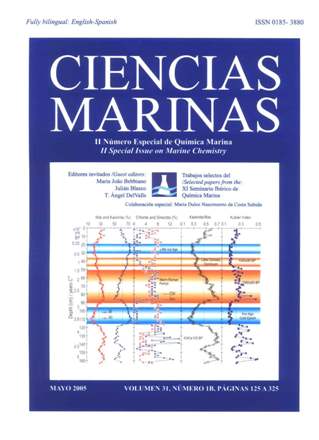Bioavailability of heavy metals in the Guadalete River Estuary (SW Iberian Peninsula)
Main Article Content
Abstract
Sediments in the Guadalete River estuary were studied to determine the bioavailability of five common metals (Cu, Zn, Cd, Pb and Ni) in order to evaluate the toxicity of the sediment. Total sediment dry weight concentrations of heavy metals, simultaneously extracted metals (SEM) and acid volatile sulfides (AVS) were analyzed. Interstitial water criteria toxic units (IWCTU) were calculated and used as criteria to evaluate toxicity, making reference to the Sediment Quality Guidelines developed by the US Environmental Protection Agency. Diffusive fluxes through the sediment-water interface were also analyzed. The balance of deposition and return fluxes demonstrated the efficiency of estuarine sediment from Guadalete as sink for metal contaminants. The ratio between SEM and AVS was smaller than one, apparently indicating that the sediment was not toxic; however, the high concentrations of Cu and Pb in pore water make further investigations necessary to evaluate the real bioavailability and bioaccumulation of trace metals to show the obviousness of toxicity.
Downloads
Article Details

This work is licensed under a Creative Commons Attribution 4.0 International License.
This is an open access article distributed under a Creative Commons Attribution 4.0 License, which allows you to share and adapt the work, as long as you give appropriate credit to the original author(s) and the source, provide a link to the Creative Commons license, and indicate if changes were made. Figures, tables and other elements in the article are included in the article’s CC BY 4.0 license, unless otherwise indicated. The journal title is protected by copyrights and not subject to this license. Full license deed can be viewed here.

